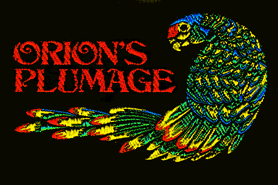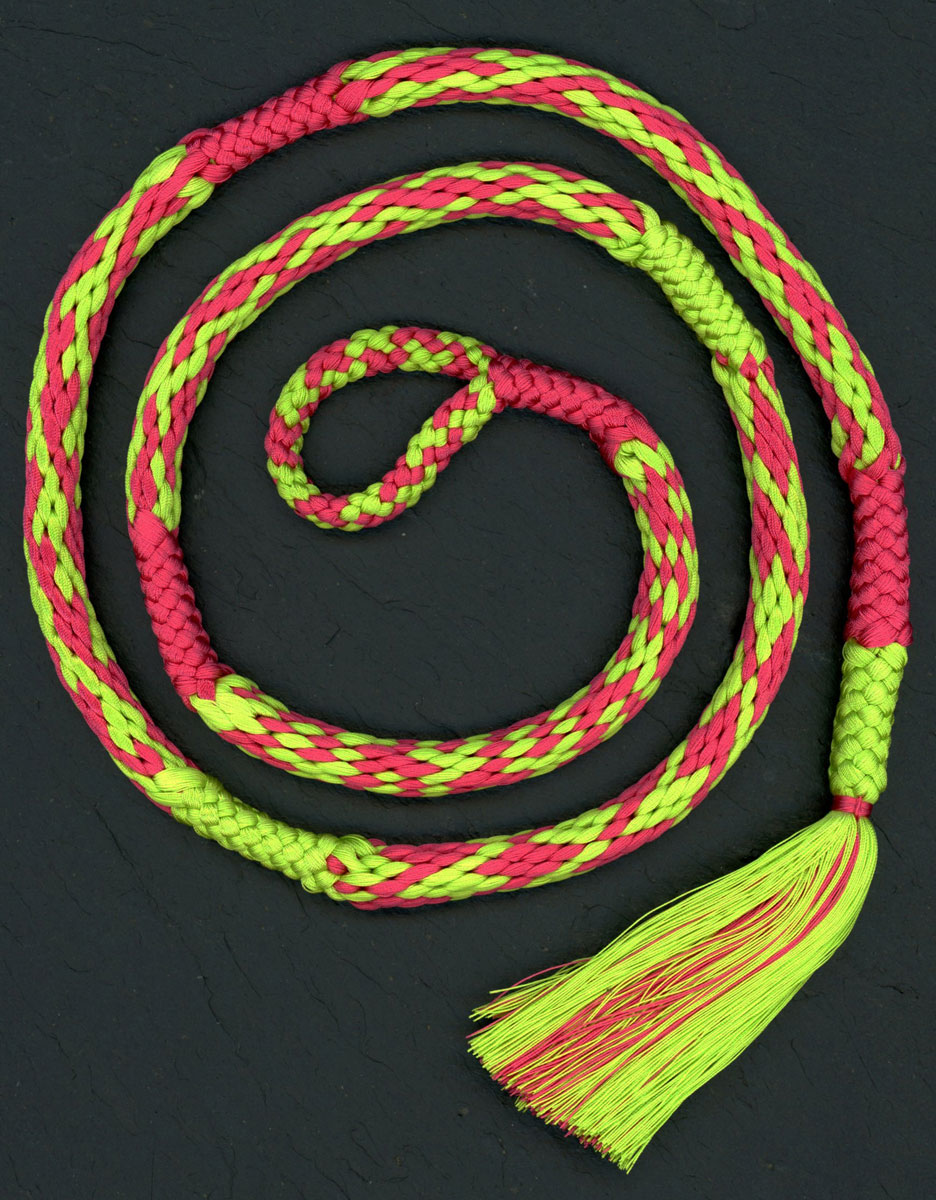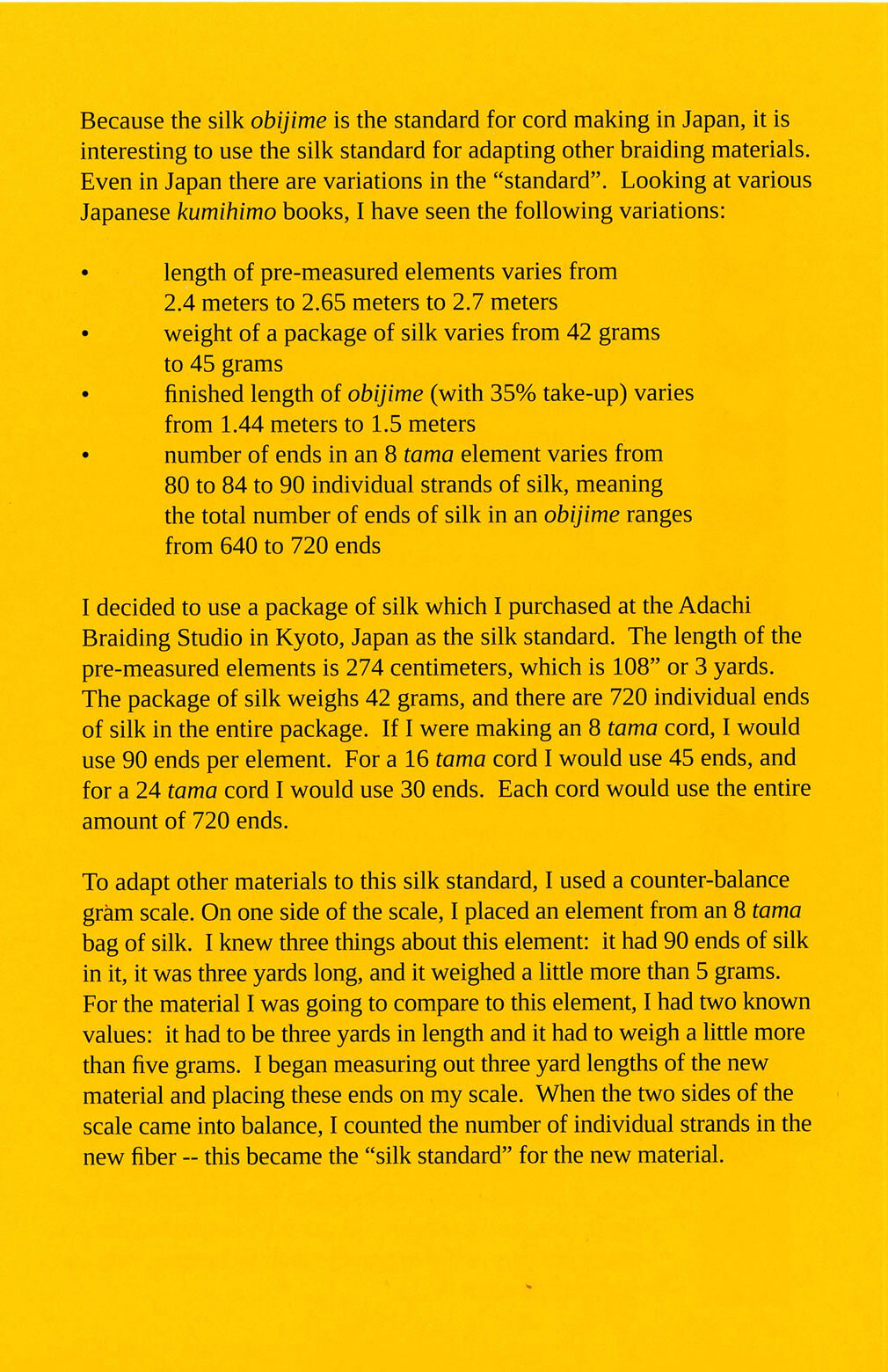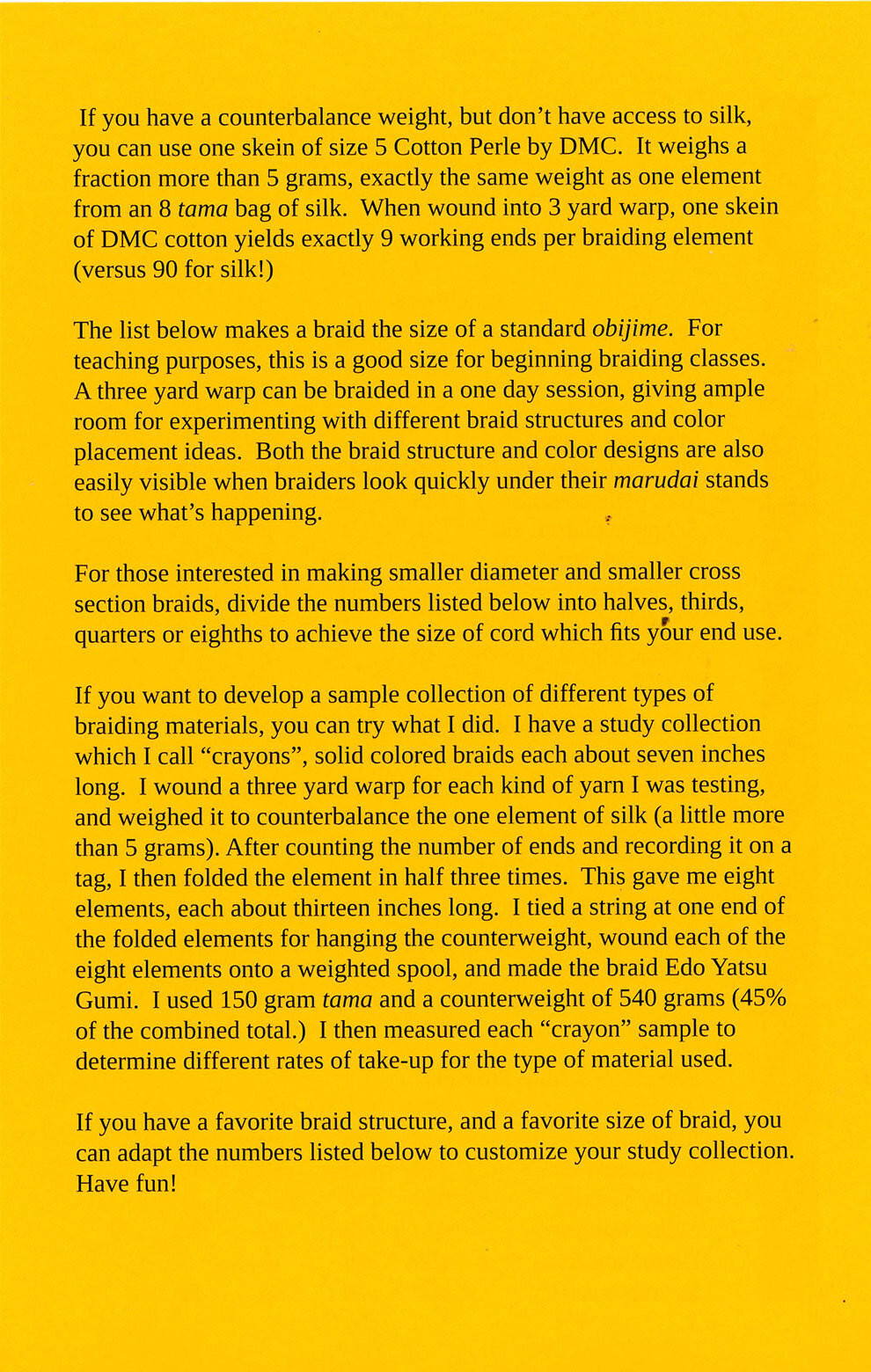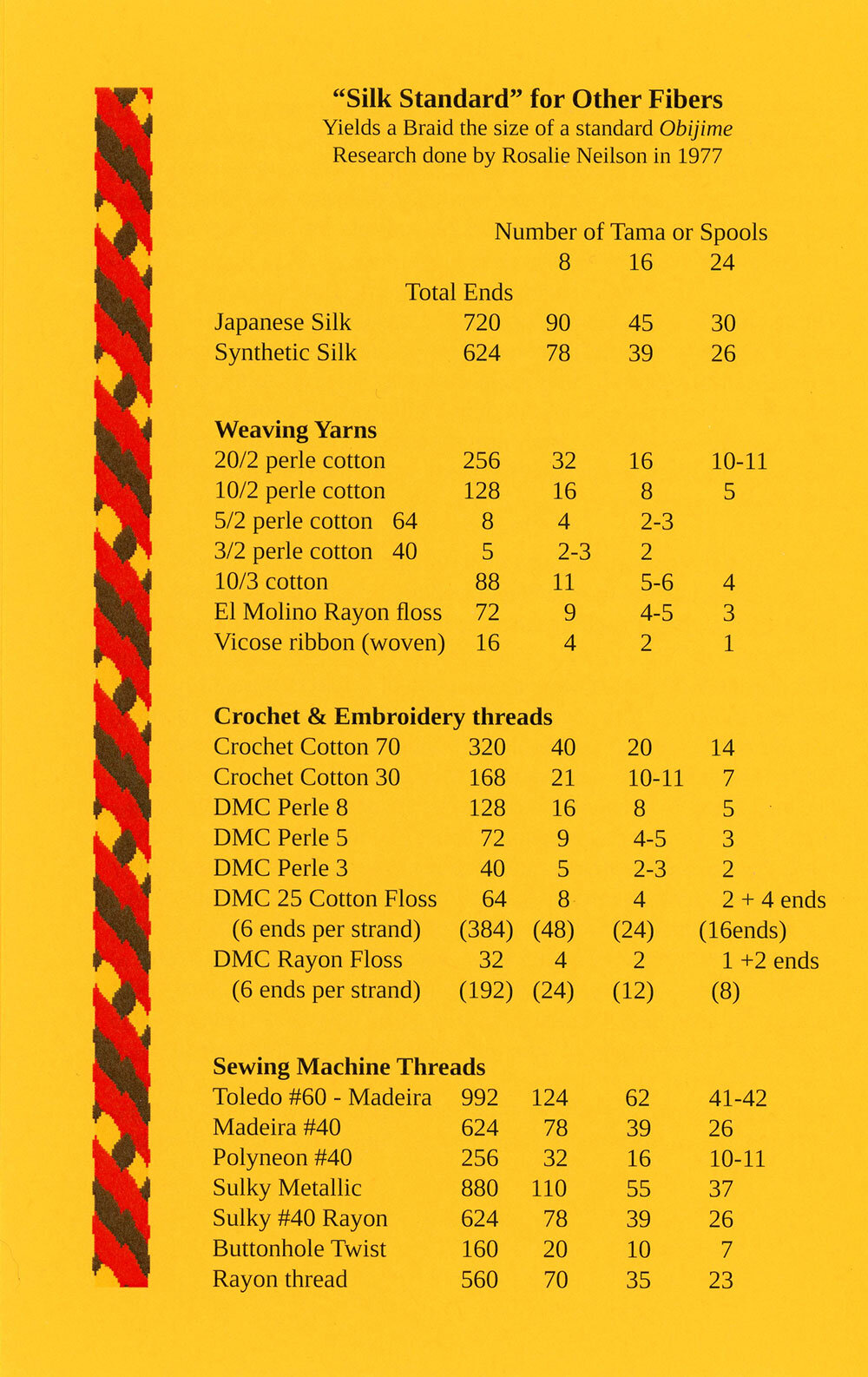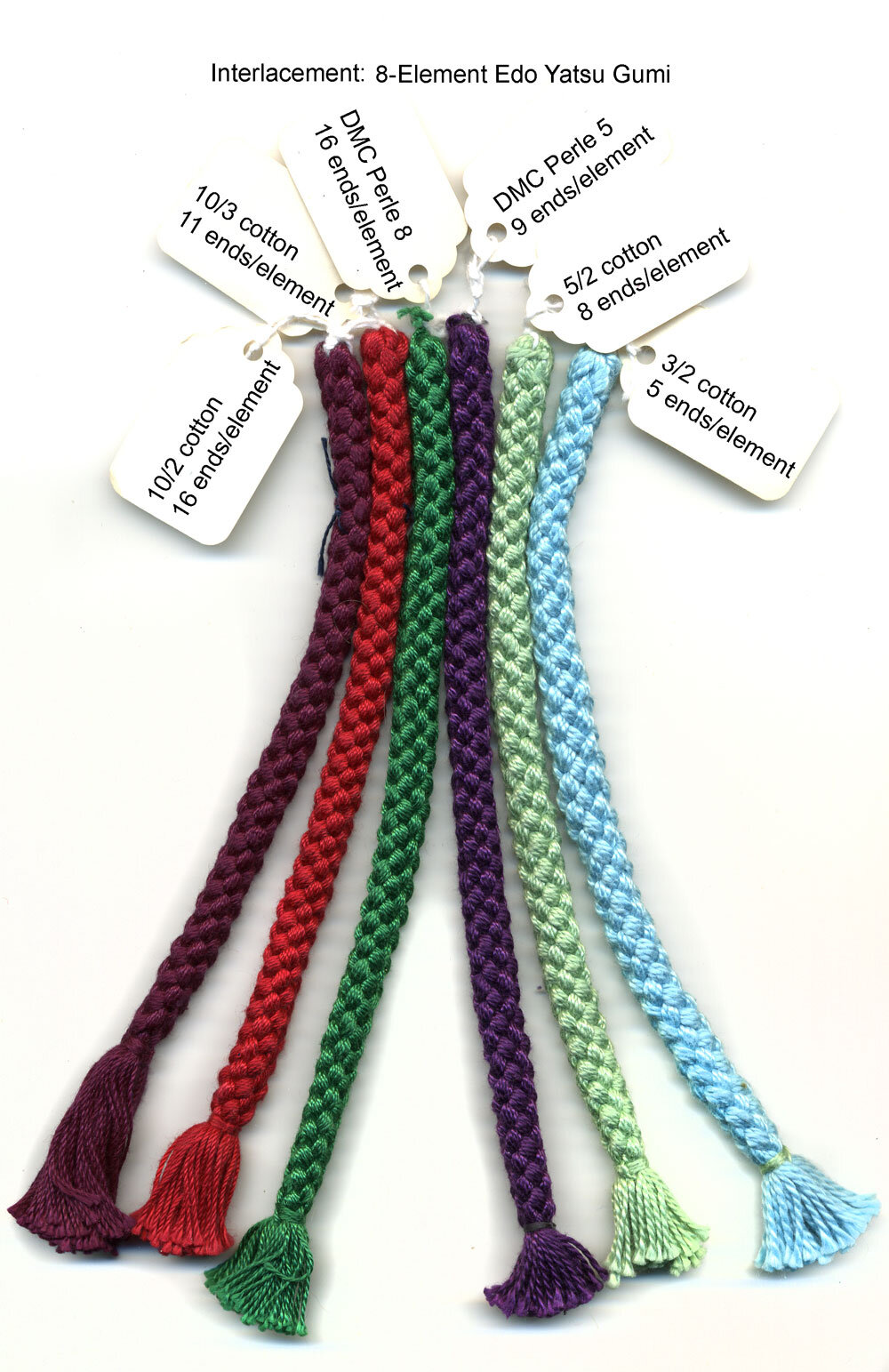Kumihimo Braiding
Kumihimo is a Japanese word for a braided cord: the verb kumu means to braid or to plait, and the noun himo is a cord.
Kumihimo history
Braided silk cords have enjoyed a long history in Japan. During the Samurai era, some styles of armor required 1000 yards of silk cord to lace together the bands of lacquered metal. In traditional dress, a braided cord (obijime) is used with the kimono and obi, assuring that the obi knot stays securely tied. Today, designers are highlighting the beauty of braided silk cords in contemporary jewelry.
Hira Kara gumi
Hira Kara Gumi is an 8-element flat braid which I learned to make during an Asian tour in 1980 at the Tokyo Naganuma Kimono Gakuin. As I began to teach the interlacement steps to others, I kept wondering how many different 2-color designs there were for this one structure. My research resulted in the 1998 self-published book called The Thirty-Seven Interlacements of Hira Kara Gumi. At the time, there were only a few books written in English about Kumihimo. Since then, there has been a virtual explosion of information in the form of books, magazine articles, blogs, and website videos. The signed, limited edition of Hira Kara Gumi has been out of circulation since early 2012. A second edition of the book was introduced at the international braiding conference in Tacoma, Washington, called Braids 2016. The book has been updated to reflect the number of colored elements required for each of the thirty-seven patterns. In Japanese, Hira is flat, Kara is Chinese, and Gumi is cord.
Edo Yatsu Gumi
Edo Yatsu Gumi is one of the most familiar 8-element braids for Kumihimo Enthusiasts. As a round braid, it is often plaited in a solid color to produce cords suitable for jewelry designers to suspend their inventive works in metal, glass, ceramic, and bone. What happens, though, when there are two colors in the cord? How many unique designs are possible? The answer is implied in the title of the book. There are twenty-four different patterns which are determined by the placement of elements on the marudai braiding stand or foam disk. In case you’re wondering, Edo is the former name for Tokyo, the capital of Japan; Yatsu is the word for eight; and Gumi means cord.
Kongo Gumi Braids
Kongō Gumi is the 16-element braid that most Kumihimo Enthusiasts learn as their first braid on the foam disk. Arranged into eight pairs, one element from a pair moves downwards toward the pair on the other side, while an element from the opposite side moves upwards to reform the pair. The disk is rotated and these steps are repeated until all eight pairs have exchanged places. It is usually made with four colors to create spiral stripes. But if the colors are limited to two, there are over eleven hundred unique designs which can be created with this one interlacement. An Internet search of this word reveals the venerable Japanese construction company formed in 578. It operated for 1400 years building temples, shrines, and castles until its recent merger with another construction company. Other images that emerge are King Kong, gorillas, dinosaurs, robot warriors, and muscular statues serving as temple guards known as kongō-rishiki. The Chinese character Kon refers to gold, money and metal; Gō means strong; and Gumi is cord.
The Silk Standard
by Rosalie Neilson, originally published in Strands, Issue 4, 1997
Journal of The Braid Society
Just as gold is the standard for many monetary systems, silk is the standard for kumihimo or Japanese braiding. For many fiber enthusiasts, silk is a precious commodity, as valuable as gold.
Continue reading the article by clicking on the pages below…
